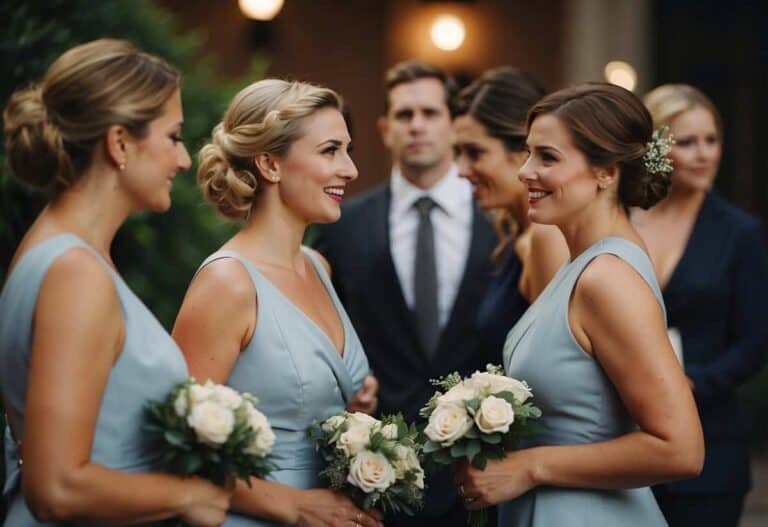Tips for Addressing Wedding Invitations: Friendly Advice for a Perfect Touch
Planning a wedding involves many details, and addressing invitations is one of them. It’s a chance to set the tone for the event and ensure that all your loved ones receive their invitations in style. Addressing wedding invitations properly shows your guests that you care about their presence on your special day.
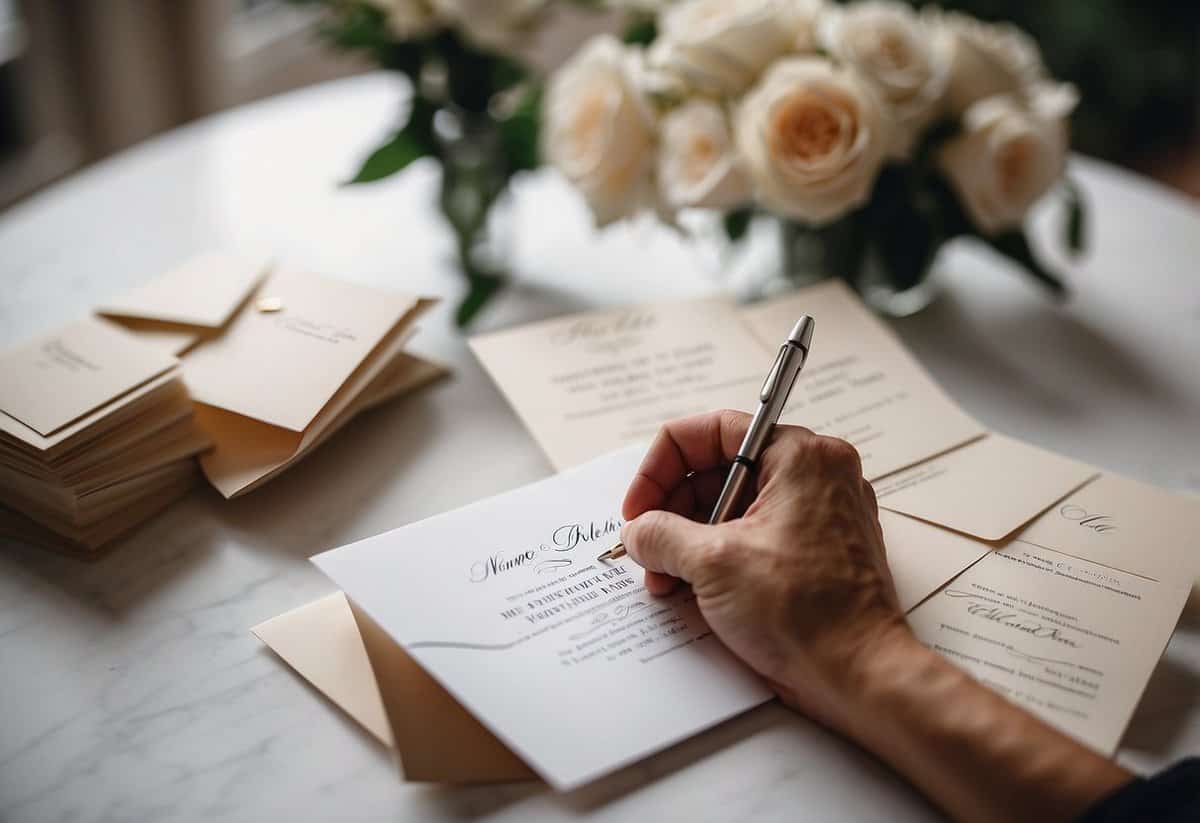
Whether your wedding is a formal affair or a casual gathering, how you address the invitations can reflect the vibe of your celebration. It’s also an opportunity to follow traditions or personalize your correspondence. Knowing the right way to address your invitations can help things go smoothly and make a lovely impression on your guests.
1) Use Formal Titles
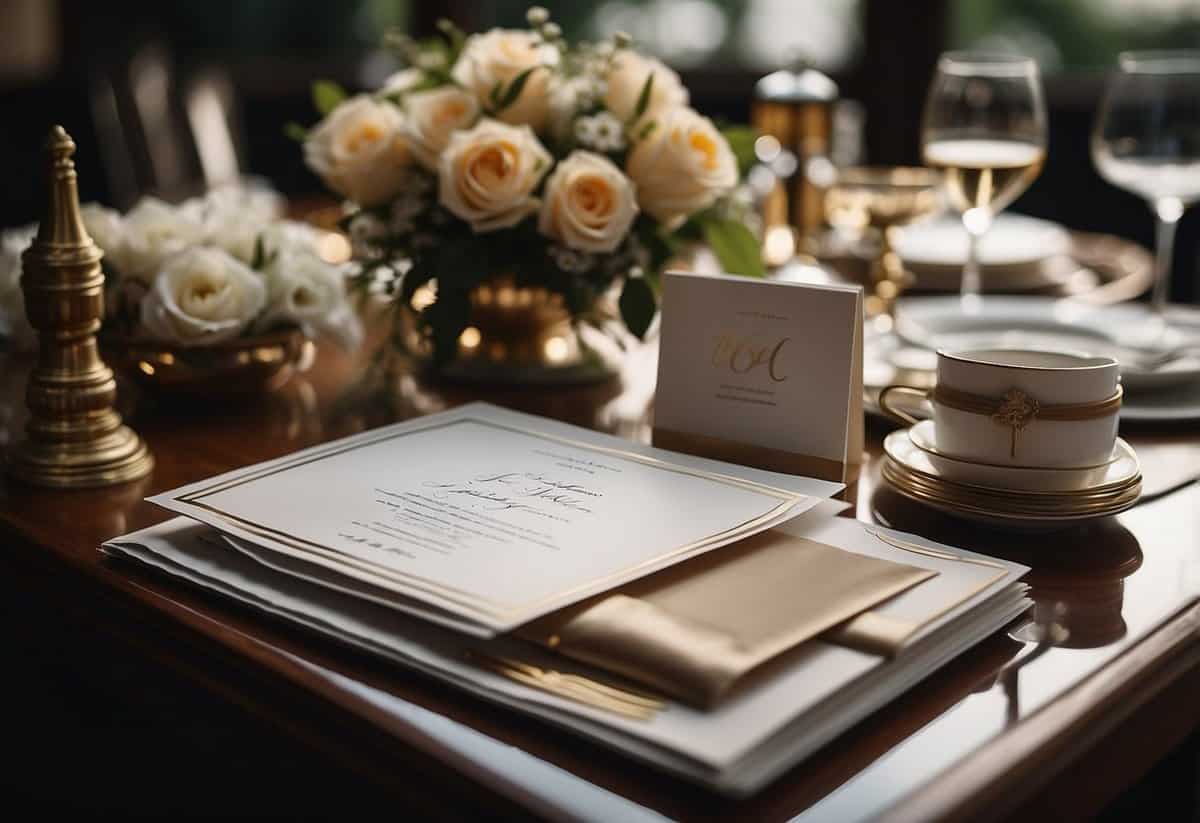
When addressing your wedding invitations, it’s a good idea to use formal titles. This adds a touch of respect and elegance.
For single guests, use “Mr. John Doe” or “Ms. Jane Smith”. It shows you care about formality and etiquette.
For married couples with the same last name, write “Mr. and Mrs. John Smith”. If they have different last names, use “Mrs. Jane Doe and Mr. John Smith”.
Respect your guests’ preferences by using the correct titles. If someone is non-binary, “Mx.” is a gender-neutral option.
Using formal titles helps set a respectful tone for your event.
2) Write Full Names

Using full names on your wedding invitations shows respect and sets a formal tone.
For single guests, use titles and full names like “Mr. John Smith” or “Ms. Jane Doe.”
When inviting couples, include both names. For married couples with the same last name, write “Mr. and Mrs. John Smith.”
If the couple has different last names, use both: “Mrs. Jane Doe and Mr. John Smith.”
Including full names makes things clear and avoids confusion. Make sure to double-check spellings to avoid mistakes. This attention to detail adds a personal touch to your invitations.
3) Spell Out Street Names
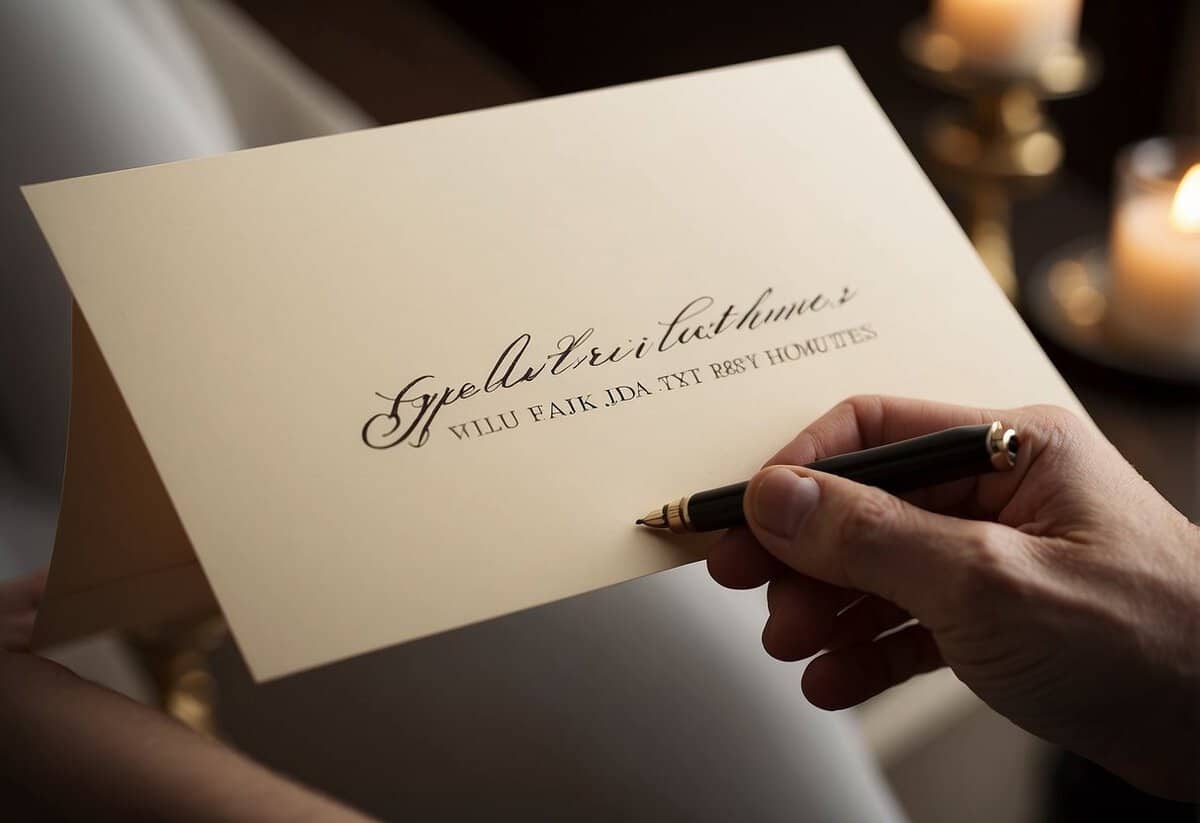
When addressing your wedding invitations, it’s important to spell out street names entirely.
Instead of writing “St.,” write “Street.” This attention to detail adds a touch of elegance to your invitations.
Write “Avenue” instead of “Ave.” and “Boulevard” instead of “Blvd.”
It’s also best to spell out state names. Instead of writing “NY,” write “New York.”
These small changes show care and make your invitations look more formal.
4) Include Middle Names
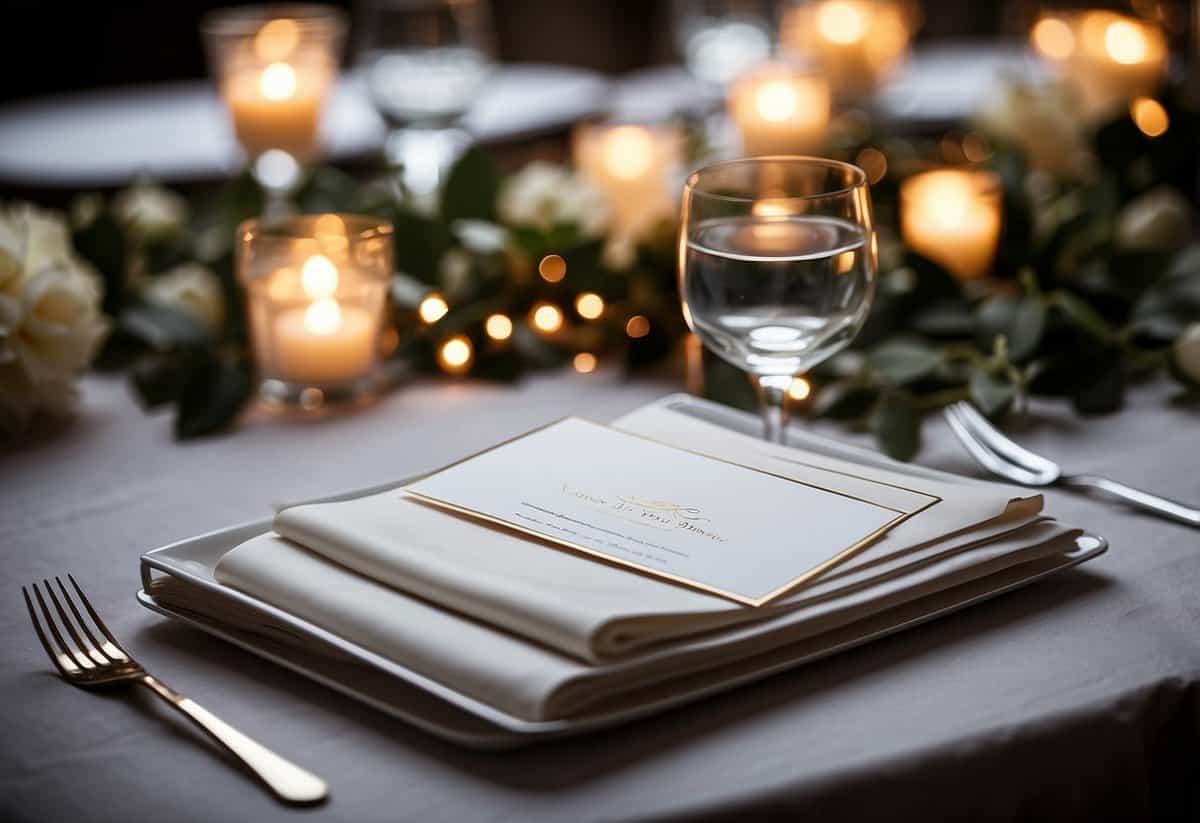
When addressing wedding invitations, including middle names adds a formal touch.
Using the full names of your guests signals respect and can make your invites feel more special. For example, instead of “John Smith,” you can address it to “John Michael Smith.”
If you’re unsure of someone’s middle name, it’s okay to ask them directly or check with someone who might know. Remember, the extra effort can make a difference!
5) Use Professional Titles
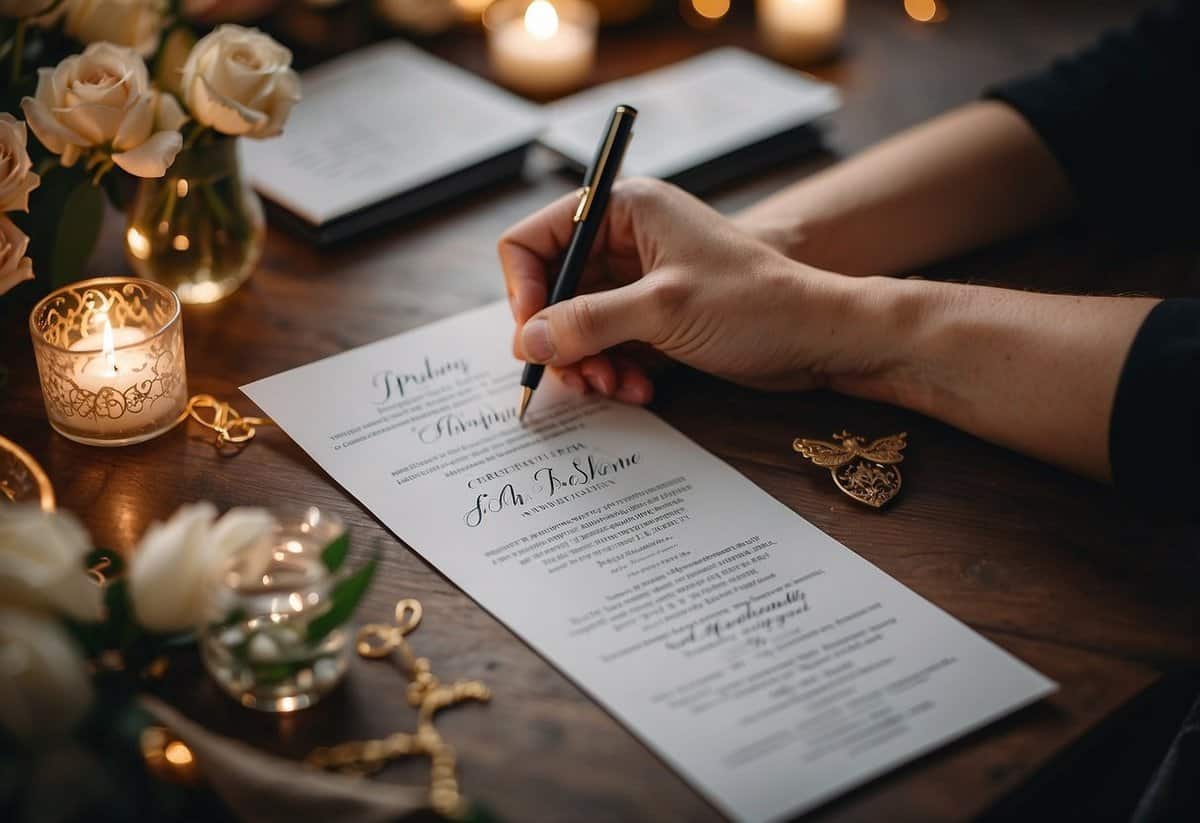
Using professional titles adds a formal touch to your wedding invitations. It shows respect for your guests and sets a respectful tone for your event. Titles like Mr., Mrs., Ms., Dr., and Mx. can be used based on your guests’ preferences.
Addressing invitations with the correct titles also helps avoid any confusion. If you know someone prefers a specific title, like Dr. or Mx., make sure to use it. This detail demonstrates that you pay attention to and appreciate your guests.
For married couples, you can use “Mr. and Mrs.” followed by the husband’s full name. If they have different last names, include both names, such as “Mrs. Jane Doe and Mr. John Smith.” For single female guests, use Miss, Ms., or the relevant professional title.
For non-binary guests, Mx. is a gender-neutral option. It’s important to use the correct title to make everyone feel included and respected.
6) Avoid Abbreviations
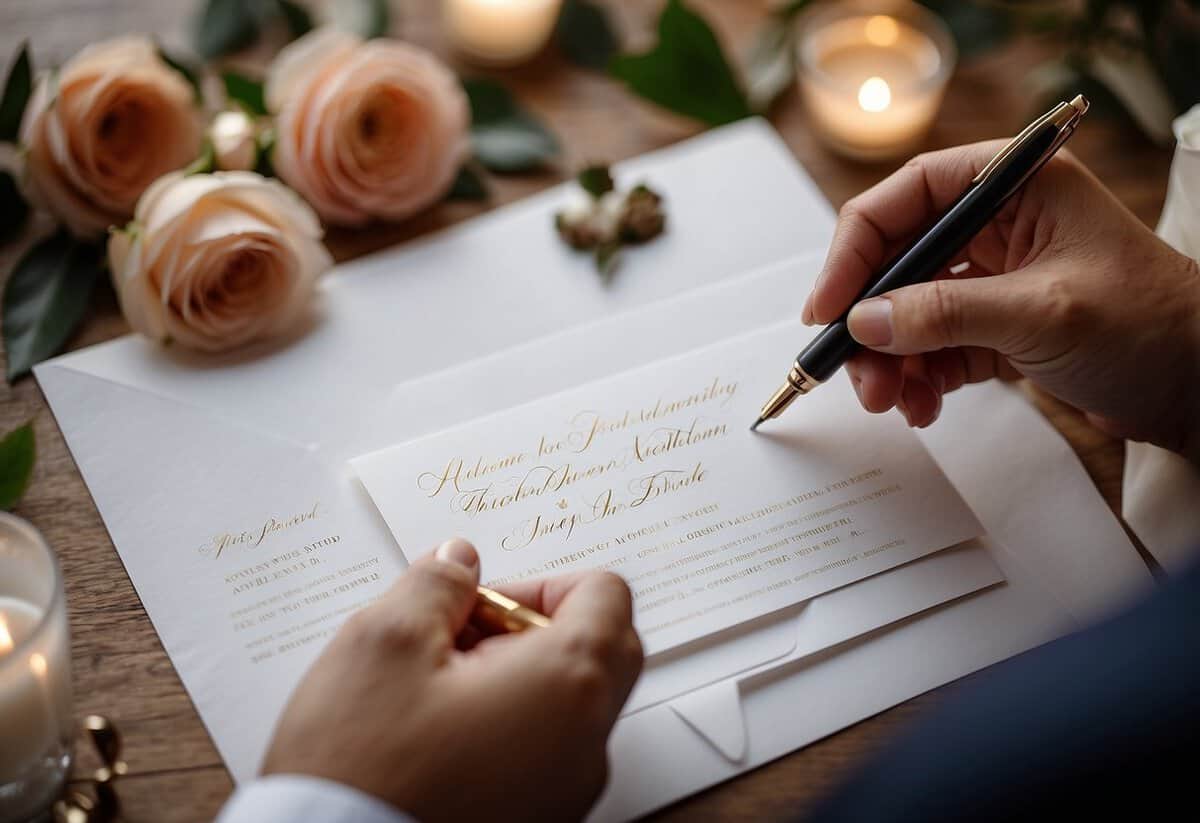
When addressing wedding invitations, it’s important to avoid abbreviations. This helps keep the tone formal and respectful.
Instead of writing “Mr. & Mrs.”, spell it out as “Mister and Missus”. If someone has a title like Doctor, write “Doctor” instead of “Dr.”
Write out street names and states fully. For instance, use “Street” instead of “St.” and “California” instead of “CA”.
By avoiding abbreviations, your invitations will look more elegant and professional.
7) Double-Check Spellings
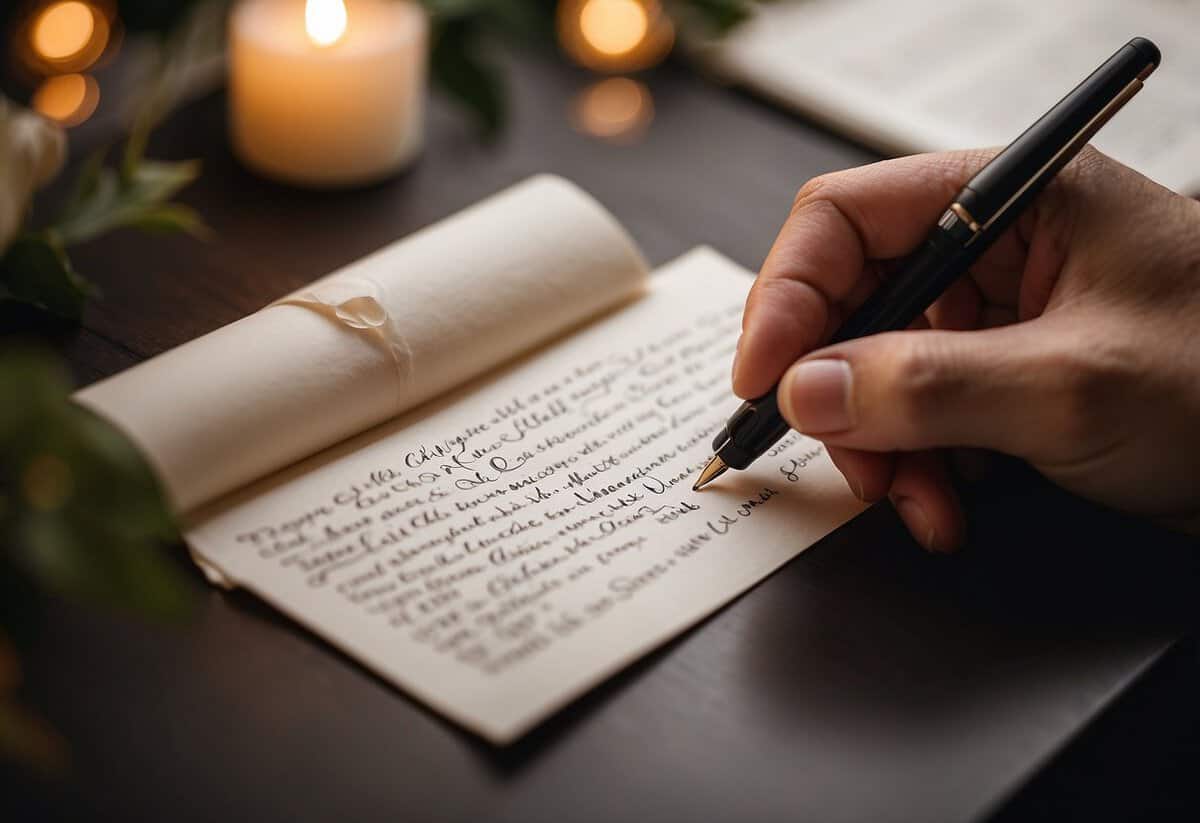
Ensuring that all names and addresses are spelled correctly is crucial.
Take the time to go through your guest list carefully. Check each name and address for accuracy.
It’s helpful to cross-reference your list with other sources. This could be social media, previous correspondence, or even asking the guest directly.
Misspellings can cause delays or lost invitations. They can also appear unprofessional.
By double-checking, you show your guests attention to detail and care.
8) Handwrite the Addresses
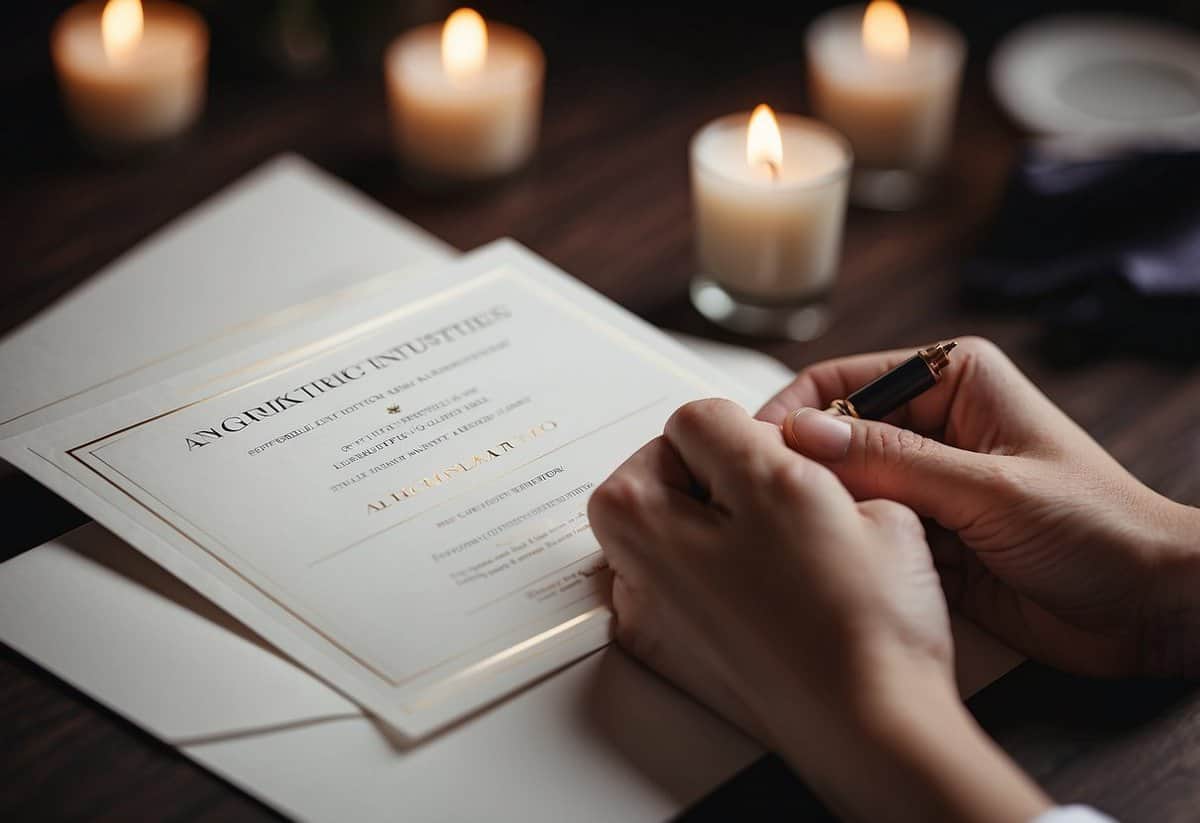
Handwriting the addresses on your wedding invitations adds a personal touch. It shows that you care and took the time to make each one special.
Use your best penmanship and a good-quality ink pen. Make sure each letter is clear and easy to read. If you make a mistake, don’t worry! Just start over with a new envelope.
Consider using calligraphy for an extra touch of elegance. You can learn basic calligraphy online, or you might even hire a calligrapher if you desire something very polished.
Don’t forget about the return address! Handwrite it on the back flap of the envelope. This gives a nice uniform look to each invitation.
Handwriting addresses may take more time, but the effort is worth it. Your guests will appreciate the personal touch.
9) Include the Return Address
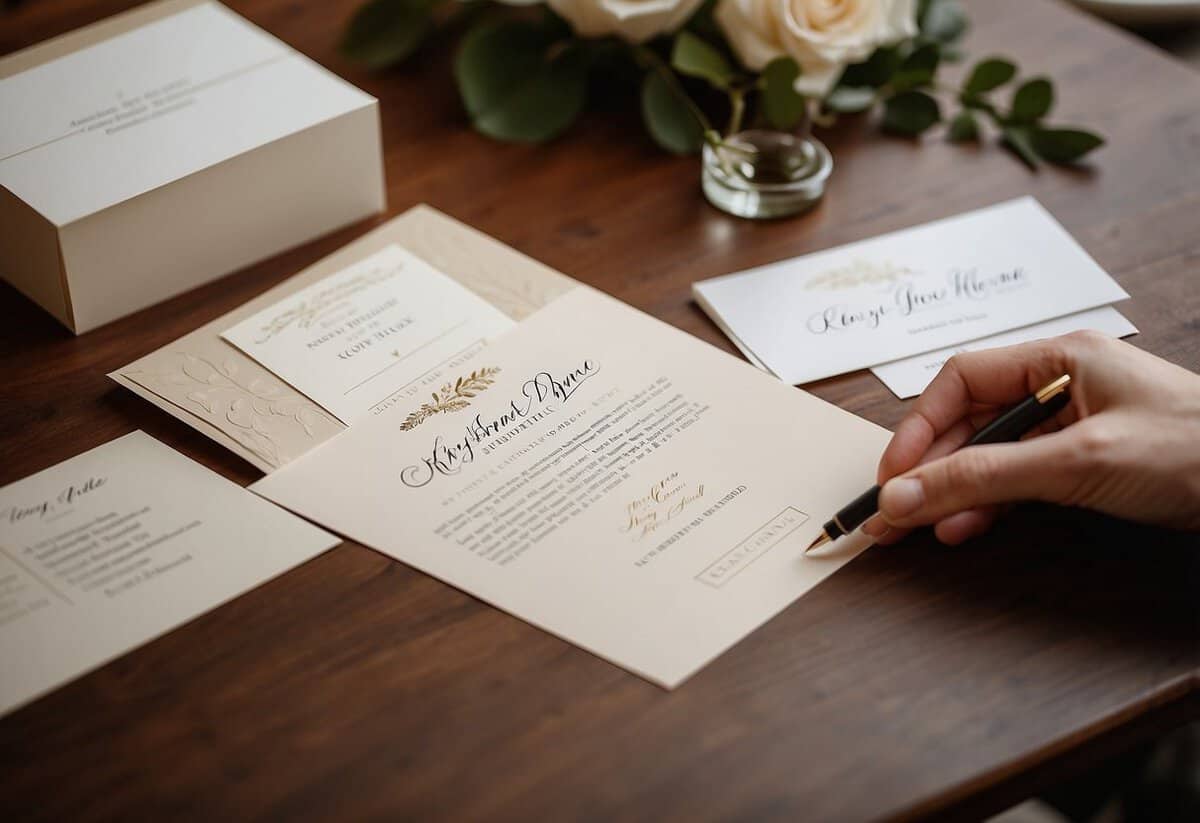
Including a return address on your wedding invitations is important. If there are any delivery issues, they can easily be sent back to you.
Place the return address in the upper left corner of the envelope. Make sure it is clear and easy to read.
Use your full names on the first line, followed by your street address. On the next line, write your city, state, and zip code.
For a formal touch, consider using a rubber stamp with your return address. It adds personality and makes the process faster.
Keep the return address consistent across all your invitations to maintain a neat look.
10) Use Quality Paper
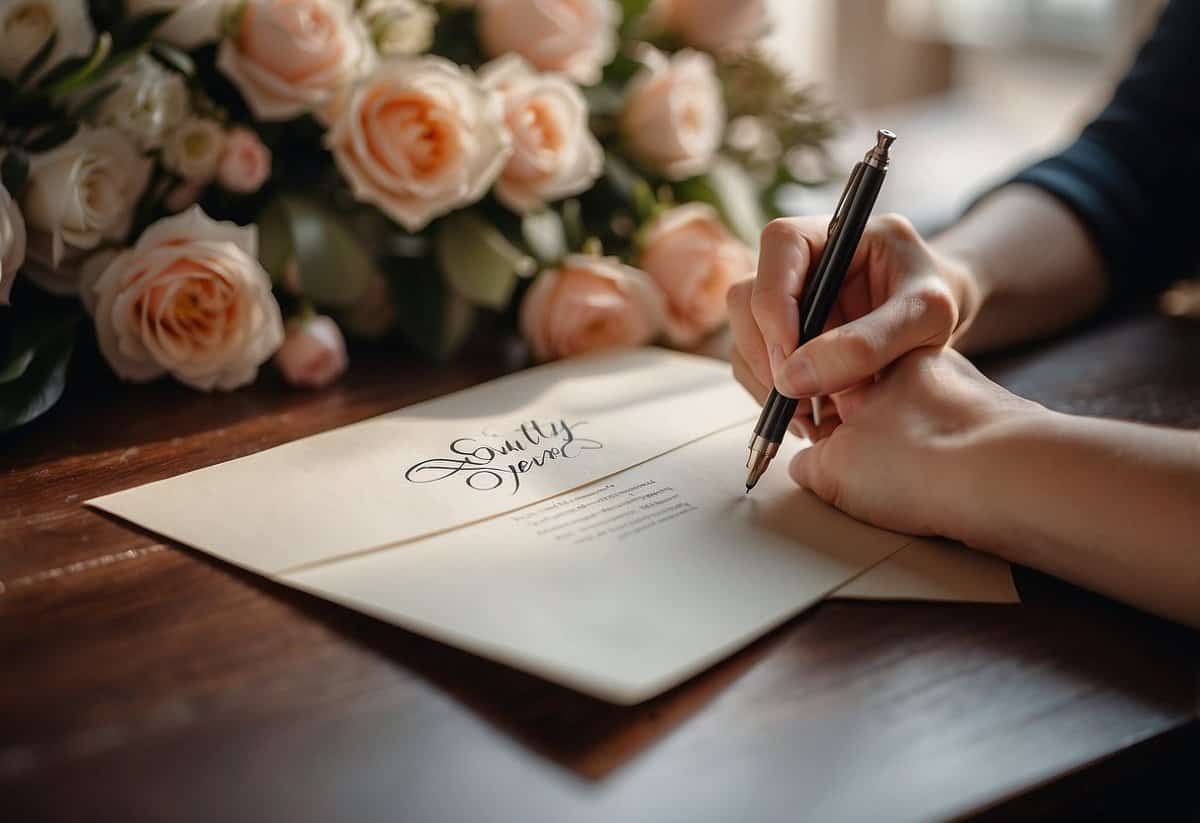
Using high-quality paper for your wedding invitations makes a big difference. It not only feels good to the touch but also shows your guests that you put thought into every detail.
Opt for thick, durable paper. This helps your invitations look more elegant and last longer.
Consider using paper with a smooth finish or a slight texture. This adds a touch of luxury and sophistication.
Choosing quality paper also ensures that the printing comes out crisp and clear. Your text and design will look professional and beautiful.
Selecting the Right Supplies
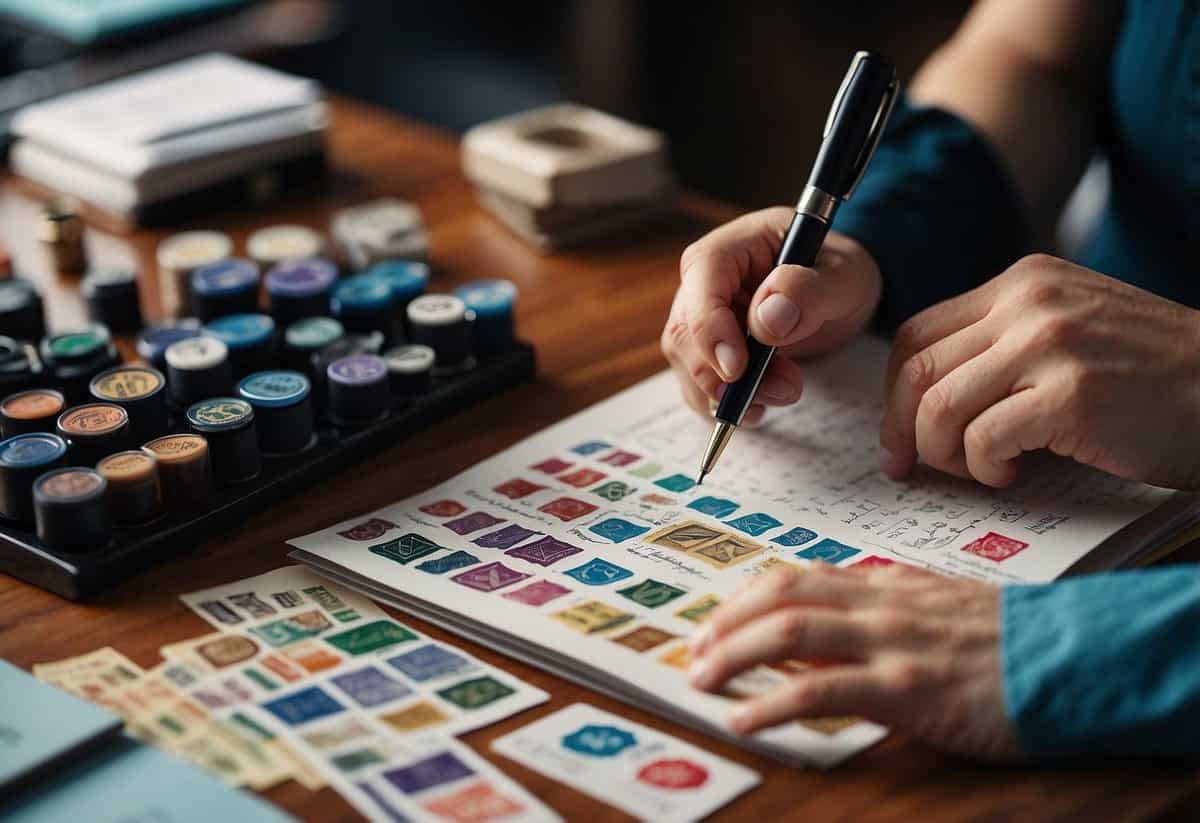
For addressing wedding invitations, selecting the right stationery and writing tools is essential. This ensures your invitations look polished, professional, and beautiful.
Choosing Quality Stationery
When selecting stationery, quality is key. Look for sturdy, thick paper that has a smooth finish. This won’t easily wrinkle or tear and will feel luxurious to the touch.
Consider matching the color and style of your stationery with your wedding theme. Classic choices include white, ivory, or pastel colors.
Opt for envelopes with lined interiors for an added touch of elegance. Many people choose to add a monogram or custom design to their stationery to make it unique.
Best Inks and Pens
Choosing the right ink and pens is just as important as selecting the right paper. Archival-quality inks are a great option because they don’t fade over time.
For a smooth writing experience, fountain pens, gel pens, or calligraphy markers are all excellent choices. These pens provide crisp, clean lines.
Avoid using ballpoint pens as they may skip and blot. Waterproof and smudge-proof inks are recommended to keep your writing looking neat and sharp. Black and dark blue inks are the most formal and widely used, but you can also choose colors that match your wedding palette.
Formatting Invitations
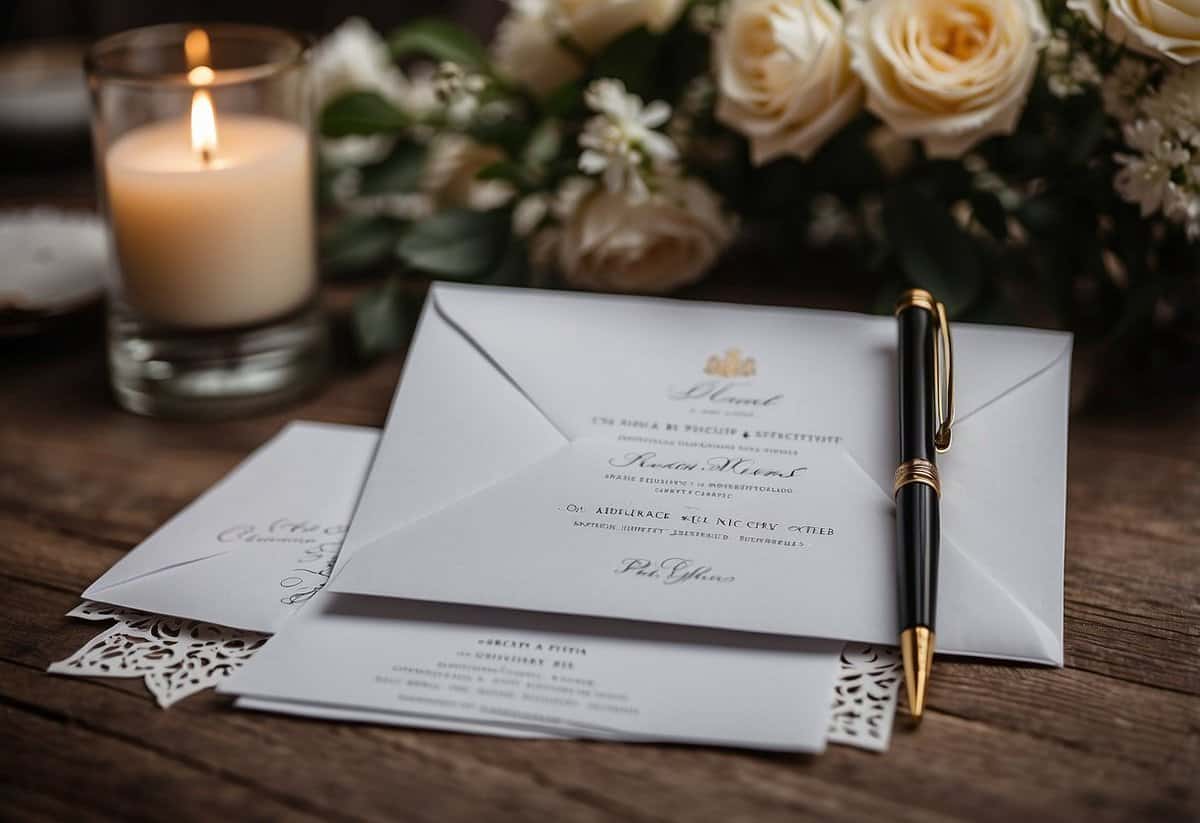
When formatting wedding invitations, consider the layout and how you address each envelope. Balancing tradition with a modern touch can make a big difference.
Traditional vs. Modern Layouts
Traditional invitations usually have a classic design. They feature formal text and elegant fonts. The bride’s name often comes first, followed by the groom’s name. Invitations are printed on thick, high-quality paper, typically in white or ivory.
Modern layouts can be more relaxed. They use creative fonts, colors, and designs. You might mix up the order of names or include both sets of parents’ names. The paper can vary, too, from recycled materials to unique textures and colors.
With either style, ensure the wording is clear and legible. It’s key to balance aesthetic appeal and readability.
Etiquette for Addressing Envelopes
Using proper etiquette when addressing envelopes shows respect for your guests. For formal events, use titles like Mr., Mrs., Dr., etc. Write out full names without abbreviations.
- Outer Envelope: This should be more formal. For example, “Mr. and Mrs. John Smith.”
- Inner Envelope: Can be less formal if you know the guests well. For example, “John and Jane.”
For couples who are unmarried, use both full names. For same-sex couples, follow the same rule, ensuring you use the correct titles they prefer.
Children over 18 should receive their own invitations. For younger children, list their names under the parents’ names on the inner envelope, like “Mr. and Mrs. John Smith” and underneath, “Emily and Michael.”
Addressing Special Circumstances
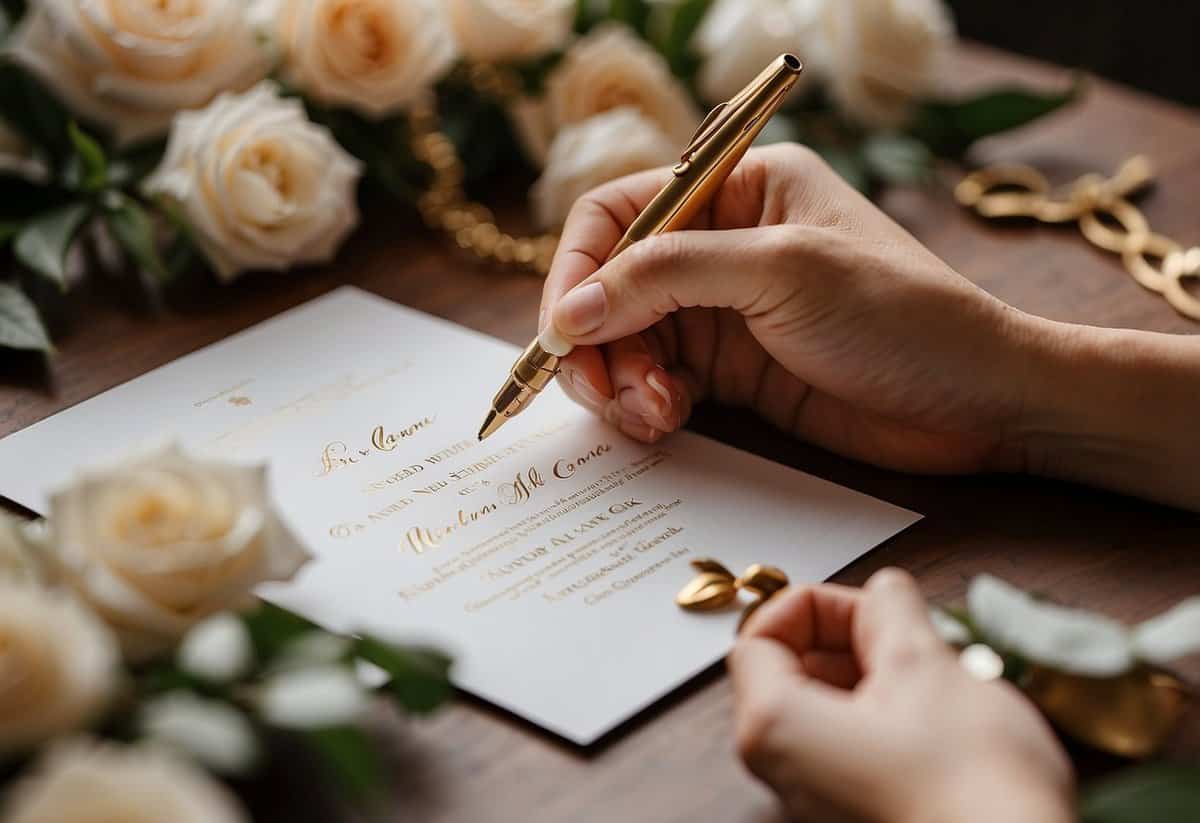
When addressing wedding invitations, you might encounter some unique situations. Knowing how to handle these will ensure that your invitations are both polite and correct.
Proper Titles for Doctors and Professionals
For doctors and other professionals, it is important to use their appropriate titles.
Use “Doctor” for medical doctors. For example:
- Dr. Emily Parker.
If both partners are doctors, you can write:
- Doctors Emily and John Parker.
For professionals with titles such as Judge, Reverend, or Professor, always use their titles. For example:
- Judge Susan Harris or Reverend Thomas Lee.
Ensure that each professional’s title is recognized properly, as this respects their qualifications.
Handling Two Envelopes
When using both an inner and outer envelope, follow traditional etiquette. The outer envelope is formal and should include full names and titles. For instance:
- Mr. and Mrs. Robert Johnson.
The inner envelope can be less formal, especially if you are close to the guests. You can simply use:
- Robert and Emma.
If the invitation is for a family, be sure to include the children’s names on the inner envelope:
- Mr. and Mrs. Robert Johnson on the outer and Robert, Emma, Jack, and Lucy on the inner.
Using two envelopes helps maintain the formality while adding a personal touch on the inside.






